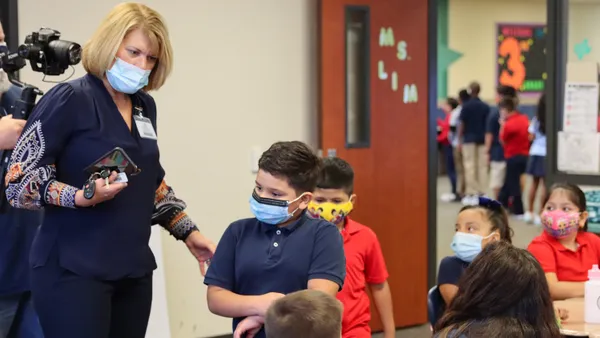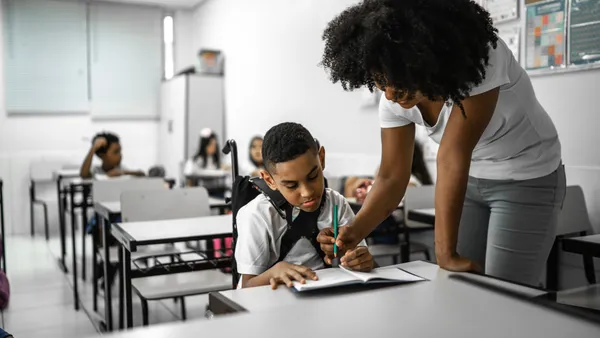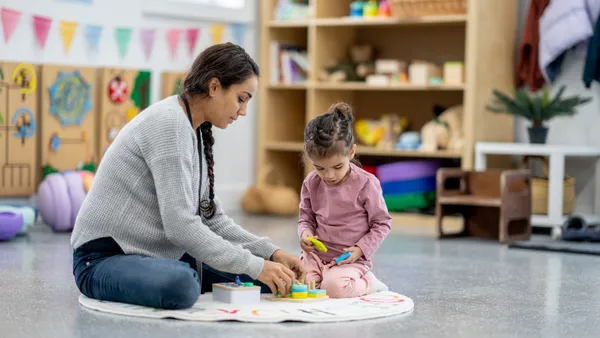Educators know all too well the academic damage associated with “summer slide.” Yet this gap can pertain to more than just academic knowledge, as many students face escalating mental health challenges during the summer. Here is what K-12 educators need to know about the extent of this other potential “summer slide” and how they can help mitigate it among their students.
Why does summer break impact student mental health?
Several factors impact K-12 students’ mental health regardless of the time of year, but some are pervasive during the summer. One key challenge summer brings is the disruption in routine. Many K-12 students also have reduced (or eliminated) access to counselors, teachers and other adult role models who help bolster their mental wellness.
Another prevalent factor that is easy to overlook is financial instability, which can lead to missed meals during the summer when students cannot rely on the school to provide breakfast and lunch. That has a direct impact, as research finds youth experiencing food insecurity are at higher risk of mental health concerns.
The unequal weight of mental health concerns
Some students, particularly those from historically marginalized groups, are more likely than others to be affected by the gap in access to school-based mental health support during the summer. Consider the following data:
- The suicide rate for Black youth between ages 5 and 12 is roughly double that of their White peers, research shows. And suicide rates among Black children and adolescents are on the rise, according to the pre-pandemic data.
- Asian students, as well as Black students and students of multiple races, were the groups most likely to say they experienced racism, according to research from the Centers for Disease Control and Prevention about high school students’ mental health concerns during the COVID-19 pandemic.
- Other CDC data, from 2019, shows that a larger share of Hispanic students experienced feelings of sadness or hopelessness than did White or Black students. Meanwhile, American Indian/Alaska Native youth continue to report the highest suicide rates of all demographics.
Gender and sexuality can also be a factor. The Trevor Project reports that 12% of White and Asian American/Pacific Islander (AAPI) LGBTQ youth attempted suicide in the past year, compared to 19% of Black youth, 16% of Latinx youth and 21% of Native/Indigenous youth. The share of respondents who considered suicide during that time was much higher, ranging from 41% for AAPI youth to 55% for Native/Indigenous youth.
Students from historically marginalized racial and ethnic groups may need extra encouragement to access mental health resources, as those populations can be less likely overall to do so, notes Dr. Daniella Maglione, a nationally certified school psychologist and senior assessment consultant with Pearson. She cites several reasons why that may be the case, including stigma around mental health within their communities and prejudice and discrimination within the healthcare system.
July is BIPOC Mental Health Month, which brings awareness to these issues and encourages educators to reflect on how they can ensure all students are getting the mental health support they need year-round.
3 steps to help address student mental health over the summer
Here are three ways educators can support families and promote sound mental health practices during the summer and all year long.
1. Publicize available support
Remind youth and families that help is available outside of school. Start by compiling a list of local and national mental health supports. These could include:
- Peer support groups
- Telehealth services
- Therapist directories
- Teen Line: 1-800-852-8336 (This nonprofit national teen hotline is staffed by trained teen volunteers.)
- National Suicide Prevention Lifeline: 1-800-273-8255 (Beginning on July 16, 2022, individuals in the U.S. can reach this line by calling, texting or chatting the number 988.)
- Disaster Distress Helpline: 1-800-985-5990 (A national hotline for crisis counseling sponsored by the Substance Abuse and Mental Health Services Administration (SAMHSA).)
- SAMHSA’s National Helpline: 1-800-662-4357 or TTY 1-800-487-4889 (Referral and information service in English and Spanish for individuals or families facing mental health issues and/or substance abuse disorders.)
Once you have assembled the list, promote it in as many channels as possible, Dr. Maglione advises. Post information on your website and create a flyer in the languages spoken by families in your community that can be distributed via email and posted on social media. Ask community gathering spots, such as gyms, churches and libraries, to distribute the flyers as well.
2. Offer activity suggestions
One potential cause of summertime mental health concerns is kids having too much time on their hands, Dr. Maglione says. “Let them know about activities or camps where students can be active and socialize with others while maintaining a consistent schedule,” she says. When reaching out to families, include information about local agencies that provide free services or adjust fees on a sliding scale according to income. Consider also compiling a list of places students can work or volunteer, such as with pets, children or senior citizens. “It helps give students a sense of belonging and the satisfaction of helping others,” she says.
3. Promote healthy habits
While never a substitute for needed therapy and medication, Dr. Maglione suggests several practices as a way to help students cope with stress, anxiety and depression. These include meditation or mindfulness training, regular exercise and maintaining a consistent sleep schedule.
Keep mental health top of mind for fall 2022
While most educators can’t be present in assessing and managing student mental health during the summer, now is the ideal time to prepare for fall 2022. Consider these steps as you plan the new school year.
1. Weave in components of social-emotional learning (SEL)
This teaching strategy helps students learn to set goals, manage their emotions and create more supportive relationships and it can be incorporated into any lesson. “SEL screening tools that are directly linked to interventions are particularly advantageous because they help us pinpoint student’s strengths and weaknesses while providing us with tools to improve these areas of weaknesses or concerns,” Dr. Maglione says.
2. Identify needed supports
Think about your school's mental health support needs and the types of support currently available and then identify the gaps. Work with other departments to augment resources and ensure you aren’t duplicating efforts.
Also consider your budgetary realities, Dr. Maglione adds. Currently, many districts still have COVID-19 relief funds available. While most districts hesitate to spend money on adding new staff, as they may be unable to support them in the future, the funds can be allocated to resources and training such as professional development; mental health assessment tools; and interventions that could be applied within a multitiered system of supports (MTSS) model.
Mental health assessments are a critical component of a well-rounded support system for K-12 students. See how Pearson’s assessment tools can help your school district prioritize student mental health year-round. Learn more at PearsonAssessments.com/MentalHealth.










